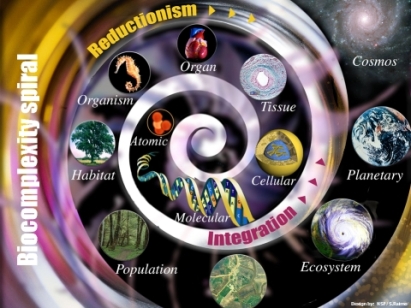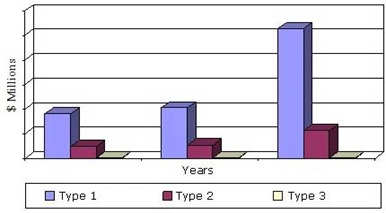By M.K. Styllinski
“The Purpose of Biotechnology is the End of Death.”
– Martine Rothblatt, CEO Therapeutics Corp.
© infrakshun
The above quote sums up the whole drive behind transhumanism – fear of death and the (androgynous) bodycentrism as arbiter of consciousness.
It would be churlish in the extreme to say that aspects of new technologies in the realm of medicine do not have enormous potential. Researching cures for diseases and the general enhancement of human life are unquestionably benefits to be welcomed, yet, altruistic advancement is not the perception that dominates in centres of power and influence. The presumption of innocence has been discarded along with any notion of privacy and independence. It is the same persistent beliefs which are being enforced by societies’ self-proclaimed wardens that humanity needs micro-managing because, like an unruly child we will only resort to bad deeds unless we are placed in various forms of shackles – seen and unseen. Monitoring and tagging the population is proceeding in order to banish every trace of uncertainty; to prepare the masses for large-scale social, economic and even environmental upheaval.
To the techno-religious ideology that flows through the currents of a SMART Surveillance Society (SSS) it is transhumanism which is set to be at the forefront of humanity’s technological transformation. A Technocracy is closely embedded in such values despite genuine protestations to the contrary. Those that do reject such a notion are not likely to remain in the vanguard for very long.
Technology, like any other tool in human hands, can be an extraordinarily powerful and liberating way to actualise our inner realities and manifest our desires. Since this series is about how psychopaths infect creativity and flip it on its head to induce entropy, then we should be monitoring very closely where this particular revolution is heading. From so-called primitive society, to the agricultural, industrial, and now the Eco-Smart-Information Age, there are extraordinary opportunities with their attendant risks. As new “change agents” work to manage and transform the old world into a new technocratic vision for all, the probability of this new transformation evolving into something other than the cherished ideals hold futurists so rapt, is very real indeed.
Awareness of ponerology in this context does not negate SMART society but perhaps considerably modifies its soaring ideals. This doesn’t mean we return to living in mud huts either. It does however demand that we use discernment and discrimination when new paradigms come along offering the kind of ideological Utopias so familiar down through history. This also doesn’t mean that technological change will not offer radical transformation. It just depends exactly what trajectory we are following and whether or not its coordinates have already been mapped in advance.
A revealing talk was given by South Korean Dr. Seang-Tae Kim, President of National Information Society Agency (NIA), South Korea on October 25, 2011 on the emergence of SMART growth. He spoke about the “Mega Trend of Future Society” and its “Paradigm shift” which will lead to SMART technologies redesigning the world. He believes this heralds a more “human-oriented” focus stemming from the rise of an aging population and the awareness of networking and a “knowledge-based economy.” Theories of “High Concept” creativity and empathy he believes, must be integral to SMART emergence to function. “Consumers” will be “Pro-sumers” generating enormous wealth outside of the normal capitalist channels thus stimulating a new innovation philosophy across bi-lateral networks of merging digital and analogue systems. A “Dream Society” characterises the New Revolution and it is brimming with hope and energy.
Seang-Tae Kim believes that a new technological humanism or human-oriented society can turn the highly volatile risks of an aging population, geo-conflict and the threat of Climate Change into a more streamlined and cost effective vision. Indeed, it is inevitable, he opines, due to the global budget deficit that demands change and where traditional government must be transformed into open government by the power of the people. For Seang-Tae Kim and other SMART-transhumanists, he advocates people power which is beyond the Fordism of the factory-line toward a more promising Post-Bureaucratic Age. He believes that local society and feudalism, government power and industrial society must naturally give way to an open-source infrastructure, an “eco-system of new values”, and a “value oriented eco-system.” This will apparently be predicated on a “platform strategy” which naturally encourages group power. (For a fascinating book on open source software and infrastructure see The Open-Source Everything Manifesto: Transparency, Truth, and Trust by Robert David Steele).
Exciting as that sounds, can such system bypass the integration, dependency and invasive nature of the SMART Surveillance State (SSS) away from pathogenic control? Does an “open source everything” mixed with the philosophy of transhumanism represent an inevitable push away from State centralisation and bland techno-homogeneity? Or, is this merely an end-game reinvention of Empire at a higher turn of the spiral? If the latter, how can we avoid SSS ideals being vectored into the same old patterns? Denial of the dark side of human progress has persistently got us into collective pickles. Yet, we remain strangely blind to the fact.
Like the transformation of society, the metamorphosis of the human being is an integral part of transhumanism beliefs. Sandwiched between the SMART Grid implementation, post-modernism, cyber-activism and virtual reality, transhumanism, sees the merging of man and machine as just a cosmic nano-second away. Replacing an arthritic hip or elbow joint with the help of embedded nanotech is something desirable to most people. Yet, this is small fry for those who wish to use nano-devices and neuro-prostheses to change us into something other than human – a post human.
In March 2012, media entrepreneur Dmitry Itskov made the ambitious claim that he planned to ‘transplant’ a human mind into a robot body in 10 years. According to the Russian this would herald the next stage of science and a ‘new human body.’ The promise of an atheistic immortality is the driving force behind the project which Itskov claims has more than 30 scientists working on it. Uploading minds without surgery would be the next challenge where bodies are left behind in favour of cybernetic super-humans merging with a bio-genetic, virtual world of limitless potential. The project is modelled after the James Cameron movie Avatar where human soldiers use sophisticated technology to inhabit the bodies of human-alien hybrids as they embark on an invasion of another world. [1]
Smart Society Building design in Taiwan Source: From Danish http://www.almeresmartsociety.net/ ‘Design in a smart society – Dream or Reality?’
This is a fairly accurate description of the dreams of your average transhumanist who believes that the merging of man and machine offer the best of all evolutionary outcomes. While the transhumanism movement has many different permutations of opposing views there are some fundamental themes that remain sacrosanct:
- The evolution of humanity
- Biotechnological enhancement that will extend and exceed ordinary human capabilities
- A focus on longevity, radical life extension and immortality
- A focus on human happiness that can become a permanent state of mind with the help of technology.
Transhumanists see the rise of the machines as a chance to reach an integration and synthesis of biology, genetics, cybernetics, naotechnology and artificial intelligence. In doing so, they believe we will transcend the limitations of human biology and the fixity of the machine to become a hybrid superman with a vastly more intelligent brain thus leading to a quantum leap in human evolution, otherwise known as the “Singularity.” This is a culmination of human evolution that has reached its sell-by date and must become fused with a SMART world convergence of biotechnology, robotics, and biometrics, inaugurating the next and most decisive step ever in the history of human evolution: The Post-Human Age. The technological component of the singularity posits a robotic “intelligence explosion” based on an exponential curve of “recursive self-improvement.” which will either draw humanity – or those choosing such a fusion – into its slipstream.
Another form of aggregate swarm intelligence; a technocratic version of the Hive Mind rather than true freedom and individuality?
Transhumanists tell us we can alter the nature and meaning of strictly organic evolution. The combination of new cognitive tools interfacing with artificial intelligence, molecular biology and the modification of emotional and mental states means the list of potential “enhancements” is never-ending. Although there is a chic, techno-spirituality, even an obvious alchemical metaphor within transhumanist discourse, the movement has historically remained an atheist/materialist ideology as the name implies. The belief has more potent implications for its direction than the mechanics of the movement itself as we shall see.
Moving back to our old Fabian and Social Darwinist Mr. Julian Huxley, it was he who coined the term ‘transhumanism’ in 1957, fitting technocracy neatly into his well-watered vision of evolutionary humanism, the genetic legacy of which he can thank his grandfather, Darwinist Thomas Henry Huxley. Transcendence, in strictly materialist terms was the goal. Transhumanism provided the imagination, hope and intellectual rigour to seed a new ideology and its conceptual framework. The systems theory of cybernetics would play a large part in its development and the parallel evolution of ecology and new physics which would be taken up with a passion, decades later.
Acting as a bridge to New Age philosophies that would surface in the late 1960s-1970s, a fusion of ecology, transhumanism and the Human Potential Movement can now be seen. (The influential Barbara Marx-Hubbard is one such Elite-lauded advocate of “bad seed” transhumanism). Two of Huxley’s close friends John Burdon, Sanderson Haldane and John Desmond Bernal who were major shapers of transhumanist thought also happened to be members of the communist party. Whereas Huxley was passionate about eugenics and saw it as integral to the development of transhumanism as a whole, Haldane was a population geneticist. Whilst not comfortable with what he saw as the “poor science” of eugenic theory, he nevertheless permitted its inclusion in the transhumanist vision. J.D. Bernal’s expertise lay in crystallography and molecular biology and shared his friend’s desire to see a new social order based around a gradual engineering of the social organism.
Another dear friend of Huxley’s was our equally dedicated Fabian guru of the 1920s and 30s: H.G. Wells. The writer’s extraordinary books did not just offer a way to funnel his eerily accurate predictions into popular literature but also served as microcosms of technocratic ideals. Wells saw Technocracy as the ideal way to manage the masses and he was wholly dedicated to the principle of neo-Feudalism as the way to control the destiny of nations.
By the 1960s other names were caught up in promoting the philosophy in popular culture and academia such as Ray Kurzweil, Frank P. Tipler, Eric K. Drexler, Hans Moravec and Marvin Minsky, all of whom contributed richer and more diverse versions of transhumanism and the Singularity. According to some, the human species has the potential to flower but not before artificial intelligence (AI) has competed for supremacy with humanity. Once this has been thrashed out in true Terminator-trilogy-fashion then humanity can get on with being the cyber-sapiens or Marx-Hubbard’s New Age version of “Homo-Universalis” and presumably upload themselves into any sector they choose.
Transhumanism reached a watershed in 1998 with the founding of the World Transhumanist Association (WTA) by philosophers Nick Bostrom and David Pearce, closely followed by their “Transhumanism Declaration.” This helped to bring prominence to other organisations and groups such as Extropy Institute and the Singularity Institute for Artificial Intelligence. As the internet took off so did the transhumanist philosophy. Cyberspace was, after all, the natural medium for the propagation of the movement’s ideas.
Ray Kurzweil is perhaps the most well-known author, inventor and futurist introducing an almost evangelist fervour to his eschatological version of transhumanism. Kurzweil published The Age of Spiritual Machines, (1998) about the future of AI and biotechnology; Fantastic Voyage: Live Long Enough to Live Forever (2004) co-authored with medical doctor Terry Grossman and explored human health and nutrition; The Singularity is Near (2005) Transcend: Nine Steps to Living Well Forever (2009) and his latest How to Create a Mind: The Secret of Human Thought Revealed was published in 2012. All of the concepts contained in these books features in a recent documentary film Transcendent Man (2013) exploring the life of Kurzweil.
What is more interesting however, February 2009 saw Kurzweil collaborate with Google and the NASA Ames Research Centre, to announce the creation of the Singularity University Training Centre for corporate executives and government officials. The mission of the university is to “assemble, educate and inspire a cadre of leaders who strive to understand and facilitate the development of exponentially advancing technologies and apply, focus and guide these tools to address humanity’s grand challenges”. [2] Ray Kurzweil does for transhumanism what Maurice Strong did for UN Agenda 21 since he appears to be on the advisory board of almost anything remotely AI or transhumanist-related. Which is why he is also on the board of Martine Rothblatt’s Therapeutics Corp.)
Moscow was the venue for the Global Future International Congress “A New Era for humanity” which took place in February of 2012 and in June 2013. Organised by the Global Future 2045 (GF2045) a non-profit organization that has: “… the goal of creating a network community with the world’s leading scientists in the field of life extension and to support them as an investment hub, contributing to various projects.” [3]
Hosted by Kurzweil, it offered an uncompromising vision of a future for post-humanity where bio /nanotechnology, AI, cognitive applications, and cybernetics would allow the mass replacement of our drearily inadequate selves. The distinguished panel of speakers and guests were writers, anthropologists, astrophysicists, NASA scientists, historians, sociologists, psychologists, philosophers and many others from specialist fields of technology. The message was yet another indication that the “accelerated” nature of technology and the “race to save the world” hadn’t lessened in its intensity, nor had the belief in technology as saviour.
On the website an introductory 7 minute video with a soaring orchestral score has a narrative which imparts the following nuggets to look forward to:
- 2012: the emergence of new transhumanist movements & parties amid the on-going socio-economic crisis
- 2012-2013: new centres for cybernetic technologies to radically extend life
- 2014: The “race for immortality” starts
- 2015: “Find ways to transfer our personality to an artificial carrier – the robotic human copy or “Avatar.”
- 2015-2020: Robots to replace human manufacturing & labour, servant tasks; thought controlled robots to displace travel needs; flying cars, thought-driven communications implanted in bodies or “sprayed on skin.”

- 2025: The creation of an autonomous system providing life support for the brain that is capable of ‘interacting with the environment’; brains transplanted into avatar bodies greatly expanding life and allowing complete sensory experiences.
- 2030-2035: Reverse-engineering of the human brain already being mapped out, wherein science comes “… close to understanding the principles of consciousness.”
- By 2035: First successful transplantation of personality to other data receptacles and the “epoch of cybernetic immortality begins.”
- 2040-2050: Bodies “… made of nano-robots” taking any shape, alongside holographic bodies.
- 2045-2050: Drastic changes to the social structure and sci-tech development. Tipping the hat to the UN, conflict and violence is “not permitted.” Instead, the priority is given to “spiritual self-improvement.” “A New Era of neo-Humanity Dawns”…
According to the website: www.gf2045.com the Russian GF2045 group met to draft a: “resolution that will be submitted to the United Nations demanding the implementation of committees to discuss life extension Avatar projects as a necessary tool in the preservation of humankind.”
An attendee of the follow up conference in 2013 was aforementioned Martine Rothblatt founder and CEO (and fittingly transgender) of biotech company United Therapeutics Corp. Rothblatt has introduced the concept of “mind clones” where the human mind is created from a “mind-file” of our social networking data and other personality sources. S/he believes the capability to do so will be made possible in under twenty years time. She even used the personality of her dead wife to create a droid template example of what transhumanists would love to see as commonplace. Cartesian dualism and atheist paradise? Or merely the next stage in our evolution?
Rothblatt sees “… the market opportunities as limitless” where everyone will be seeking to make a digital copy of their thoughts of their memories, thoughts and feelings to be made manifest in a droid of their making. Grabbing a slice of the artificial action, Rothblatt believes is inevitable: “We all want an i-phone, we all want a social media account and we are all going to want a mind clone.” [4]
Speak for yourself Martine.
And what would you know? Amazon and Google are extremely keen on this type of artificial intelligence.
(The concept of transgenderism and androgyny has an occult-esoteric element within transhumanist discourse, something which Rothblatt appears to personify and something that will be explored further in the Occult Transhumanism).
To reiterate, it could be said that these imaginative interpretations of one possible future without awareness of the ponerological basis of psychopathy “demanding” anything (and worse still, receiving it) would be a recipe not for human freedom but more ways to welcome its opposite. An alternative future that is drawn from exactly the same technocratic tenets will be a decidedly Dystopian one and no less probable should we allow ourselves to be guided down these grandiose beliefs. That’s not to say we have not been affected positively by technology since the Industrial Revolution. Improvements in health and sanitation; air travel; photography; computers, medical advances and information technology have positively reshaped the world. Once again, it is the perception of reality that will define how these technological innovations are used and whether a healthy techno-culture can exist.
“The biocomplexity spiral is a depiction of the multileveled complexity of organisms in their environments, which is seen by many critics as the ultimate obstacle to transhumanist ambition.” (wikipedia)
The other problem with transhumanism is the adherence to a belief that evolution is dependent on machines to take us to the next level. Nature is inherently unpredictable and disruptive since that is the whole reason how non-linear evolution occurs – far from equilibrium. It is therefore outside human-implanted notions of intelligent design. Aside from obvious hubris, attempts to replicate, emulate nature may be partially possible, but to try and go beyond bio-complexity itself is to re-enact an unnecessary mythology which is Promethean/Luciferian in its ambition.
There are many advocates who advise caution in the development of technology. Kurzweil, to be fair, does his fair share of warning the faithful of its potential slip into Darth Vader territory. Nonetheless, once the momentum gains more traction it is unlikely that any safeguards will be present, let alone feature as a primary component to secure an ethical and moral foundation. Indeed, as this series of posts has hopefully indicated, there are signs it is being absorbed into exactly the same mainframe of Official Culture and its overseeing Establishment.
At present, such an ideology is highly attractive to a variety of intelligent people, many of whom are sincere in their beliefs to improve societies. One advocate defined transhumanism in simplest terms as: “… the idea that human kind can use science and technology to become more than what we are and help those interested in doing the same and in protecting the freedom for all to decide for themselves how to be happy, in other words ‘Life, Liberty and the Pursuit of Happiness’.” Surely, is this not something we ALL want? Unfortunately, the reality of transhumanism routinely goes way beyond such simple definitions, and their lies the problem since it plays into – and is promoted by – the more pathological elements of the movement.
Moreover, it is precisely this pathology to which transhumanism in particular lends itself, namely: clusters of psychopaths and social dominators straddling all social domains for whom this ideology undoubtedly appeals to the workings of their “machine minds”. Naturally, this won’t be acknowledged by its adherents since the dependence on our chosen belief tends to prohibit negative associations. Consequently, wealthy techno-psychopaths bring with them a great deal of charisma, PR and investment disbursed through the various connected branches that make up the movement: from Hollywood, media, social science and the military-corporate complex.
As rapid advances in AI, quantum computing, neurology and robotics continue then it is simple logic that the time will approach when a digital map of the human brain will be placed into machines and eventually surpassed just as Rothblatt has indicated. It is then that a potential separation will occur between two types of human beings, perhaps labelled the “organics” and the “post-humans” and in much the same way as normal people are unconsciously separated from a variety of psychopaths and sub-categories of the same.
If we are already embedded in the SMART infrastructure how likely is it that we will have a choice which breakaway civilisation to follow? Or, will “group consciousness”, communitarian “consensus” and SMART “efficiency” simply decide for you?
Notes
[1] ‘Who wants to live forever? Russian project aims to transplant a human brain into a ‘Davros’-style robot body within 10 years’ By Rob Waugh Daily Mail, March 2 2012.
[2] ‘The Singularity Is Near: Mind Uploading by 2045?’by Tanya Lewis, June 17, 2013. | ‘Future of Artificial Intelligence in Mind Clones’ bloomberg.com, https://www.youtube.com/watch?v=4bqZp9TPYVk
[3] FAQ | “Singularity University.” Singularityu.org. September 9, 2008.
[4] Gf2045.com

































